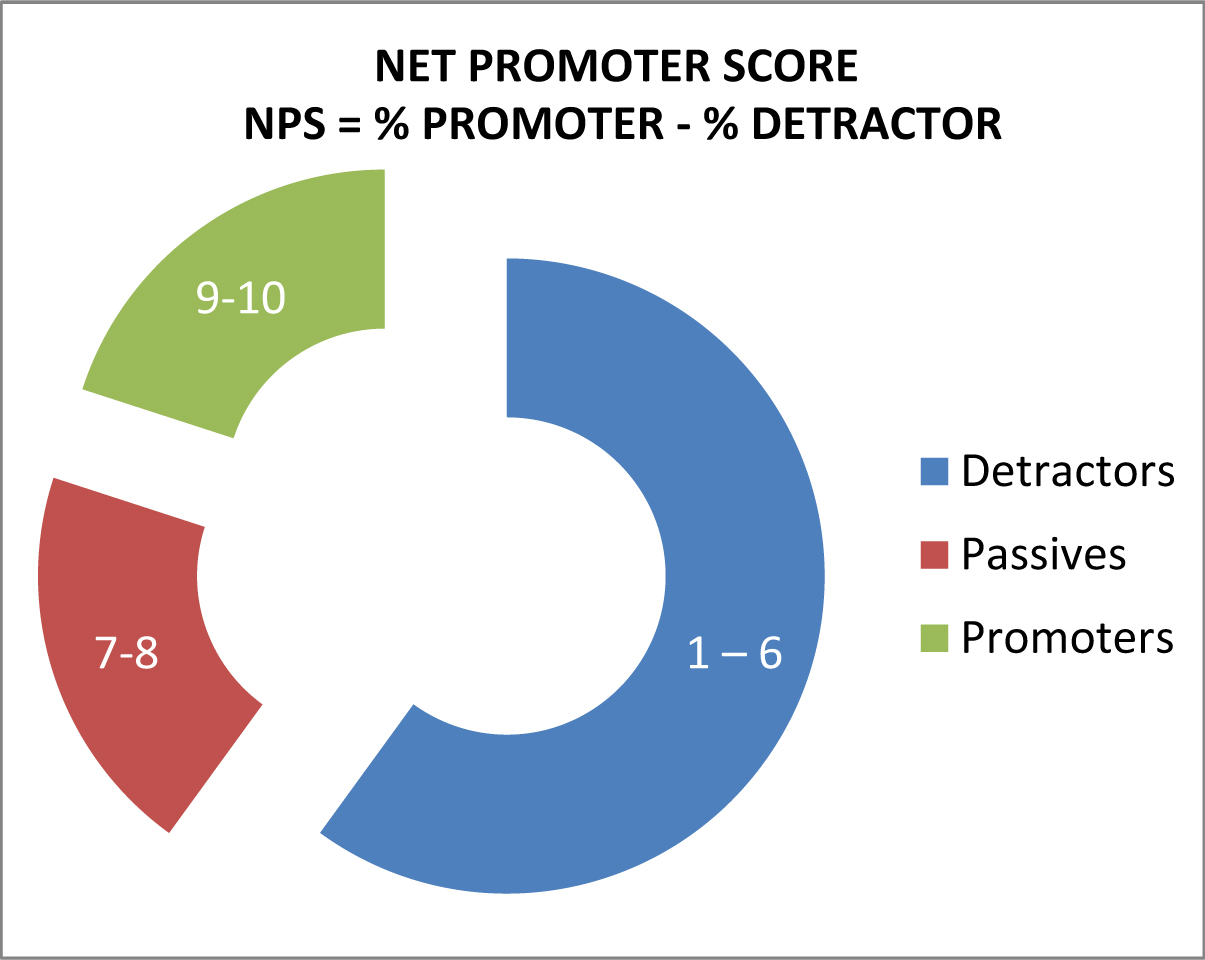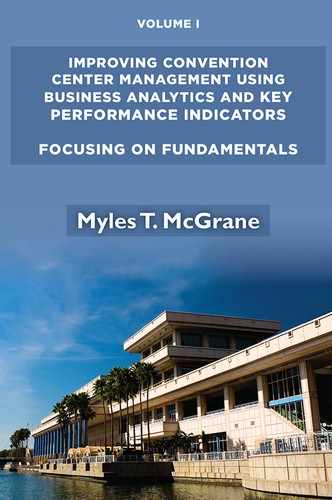Customer service has always been a centerpiece of convention center operations. It is closely linked to the city’s reputation and inevitably all fundamental KPIs. It consists of everything from parking available to taking orders, to rendering service, and to handling complaints. For our business, there are at least three classes of customers, all with different touch points and needs; event organizers, exhibitors, and event attendees. Exhibitors are probably the most important because the service delivery is more complex, time-sensitive, and intimate. Center labor from carpenters and electricians to someone who empties the trash all interact with exhibitors.
These KPIs are useful because of the following reasons:
1. We’re in the service business. Our product is not something off a store shelf or online. The services we render are often personal and face-to-face.
2. Convention centers need a means to assess customer service, not just a cursory record, but a method that looks at root causes, trends, and the effect on business.
3. Customer service concerns increase in unionized centers where the freedom to select and hire from a list is not practical and often not permitted by union contracts. Concern heightens when an extraordinary workforce is needed to produce a large event as many “extras” are poorly skilled and have no event experience. This situation needs monitoring to measure detrimental effects on business. As an industry we can ill afford the labor problems once experienced by Detroit, Chicago, New York, and Philadelphia again.
KPI: Complaint Summary—Number and Nature of Customer Complaints
Owner |
General Manager, Sales Department, Event Services, and Operations Departments, in sum all employees |
Data Sources and Collection |
The principal source is the event services manager assigned to the event. They are with the organizer’s event team most of the time and hear about complaints directly. Other sources are the event security contractor, other center managers, or the General Service Contractor. Food and beverage quality and service complaints can also come from the F and B contractor. Another growing source of fielding complaints is social media. In these cases the event services manager will have to rely on the center’s social media manager. There is no end to good solid professional advice about handling complaints via social media. In the end, it’s important that all information be funneled through the event services manager who should compose an End of Event report. |
Reporting Frequency |
Quarterly |
Why This KPI Is Useful
This KPI introduces substance and clarity to a key metric for customer service. Complaints include pricing, speed of service, quality of service, and food quality among others. Managers should be well aware that only a small percentage of customers complain through established channels. In effect, most customers, even if they have legitimate complaints, don’t complain directly. So the number of complainants is representative; there are most likely more.
Create a knowledge base of customer service complaints, which are properly recorded and categorized.
Managing an Unfavorable Conclusion or Inference
Any complaint is unfavorable. It is the number of complaints but also the gravity of complaints. In my experience at the Javits Center, we went from an intolerable situation where the center was the model of poor customer service to a favorable level. In the late 1990s after the center had rid itself of organized crime and corrupt unions, we paid to have a best in class survey done emphasizing customer service. It took a few years to change perceptions about the center and the survey showed us solidly in the “pack,” not the best but well distant from the worst. Clearly the core of our improvement was to be selective and hire and train a better workforce.
I recommend that managers and supervisors be held accountable for following up on complaints and getting back to the complainant with a resolution and apology in the same fashion and rigor they apply to work obligations. Customer service has to be a part of all employee evaluations.
How to Calculate and/or Organize Data
1. The Event Services Department will create complaint categories (eg., quality of work, response time) and sum complaints for the quarter.
2. Calculate percentages of complaints per category.
3. Calculate the number of complaints per event for the quarter, YTD and compare to last year’s number of complaints per event.
4. Every complaint has story behind it. Unfortunately long narratives do not fit a data colection format. To track complaints, it’s best to to create specific “baskets”, one for work quality, another for delays and anither for rudeness and so on. Count and track them for every operating division and every event. Review quarterly.
Presentation Notes and Formats
Tables, bar graphs, or both, comparing current YTD to previous YTD.
Owner |
General Manager, Sales Department, Event Operation, and Event Services Departments |
Data Sources and Collection |
There are many NPS templates available on the internet. If the convention center staff has no experience conducting surveys, it is recommended that a survey consultant (one with NPS experience) be hired to launch the program. They can direct the style, content, and distribution of the survey. Consultants will also help interpret the results, which will require statistical analysis skills. It would be a plus if the survey was coordinated with the CVB. |
Reporting Frequency |
To launch the NPS survey, it is recommended that it be done for select events at first. After enough data is obtained and there is confidence in the survey, conduct them for all major events. As a KPI report, do so semi-annually. |
Why This KPI Is Useful
NPS is a survey method that measures customer satisfaction and loyalty. NPS survey results show the willingness of a customer to recommend your products or services to others. It is calculated based on customer responses to a single, straightforward question, “How likely are you to recommend our company/product/service to a business associate?” The process uses a unique classification system separating customers who are “promoters” from “detractors”, or “passives”. Read “How to Calculate and/or Organize Data below.
NPS has gained popularity and use in part because of dissatisfaction with conventional customer satisfaction surveys. Standard, generic surveys are too long, ordinary, and seem to regard all customer experiences as similar. The investment community has tended to ignore customer satisfaction surveys because they cannot see a correlation between high customer satisfaction scores and sales growth. However, their view of NPS is much more meaningful. NPS differentiates itself from other customer survey methods because of its simplicity and statistical validity.
It’s easy to be skeptical about NPS because satisfaction and loyalty appear too abstract and not down-to-earth as measures. How can one take qualitatively scaled survey results (Net Promoter Scores) and use them as business statistics to drive service improvements or forecast growth? The originator of the NPS concept, Frederick F. Reichheld, from Bain and Company, thought likewise as he and his team tested for statistical flaws and reviewed actual case studies. Their test results removed any doubts about NPS as a management tool.
Convention centers need a reliable indicator to gauge customer service. I have been there and wrestled with customer satisfaction surveys; they’re expensive, difficult to administer and obtain a good sample size, and the results too general to come up with a targeted improvement program. NPS is a better solution. It’s simple, direct, and responding is easy. Importantly, the NPS process and format are familiar to our industry. NPS is already being used extensively in the tradeshow and convention industry. Skip Cox, Senior VP of Research and Measurement, Freeman Company, related that exhibitors and event organizers have been using NPS for years to assess the effectiveness of their exhibits at specific tradeshows. To gain a better understanding read Reichheld‘s Harvard Business Review article “The One Number You Need to Grow” (https://hbr.org/2003/12/the-one-number-you-need-to-grow). There is also good sound advice in this article about getting an NPS KPI started.
Objective
Obtain a knowledge base of NPS for customers representing different event types and economic sectors. The next objective is to do something with the results (it is estimated that the average benchmark range NPS for B2B companies is 25 to 33). Learn more about whom the promoters are and why they recommend your city and convention center. Skip Cox told of the value in asking passives a question in the survey, “What would it take for you to become a Promoter?”, and detractors, “What improvements to venue services do you recommend?” The responses should be clear and enlightening. At some point the objective will be to decrease detractors and turn passives into promoters.
Managing an Unfavorable Conclusion or Inference
I would be concerned if your NPS survey fell near the bottom of the benchmark range or below. I would first rely on the experience and opinion of the survey administrator. I would also be mindful of the written answers to questions asked in the survey to passives and detractors. The conversion of passives and detractors to promoters may take a good deal of customer service training and examination of business and service policies and procedures.
How to Calculate and/or Organize Data
When the surveys are returned:
1. Break the responses into three groups based on their scores.
2. Promoters are customers that ranked you 9 or 10.
3. Detractors are customers that marked 0 through 6.
4. Passives answer 7 or 8.
5. To calculate NPS – NPS = (Number of Promoters – Number of Detractors) / (Number of Respondents/100)
6. The process is depicted in Figure 6.1.

Figure 6.1 Net promoter score
Presentation Notes and Formats
Tables for each event type and economic sector along with commentary to open-ended questions and possibly a single table for an aggregate score. Bar graphs may be appropriate as the program matures especially if there are dramatic changes, comparing current results to past results.
Things to Watch for: Misinterpretations, Nuances, and Cautions
When Obtaining an NPS from Event Organizers, Know that Some May Purposely Respond as a Detractor to Leverage More Concessions: Better Event Dates, Better Space, Rent and Service Discounts: One of the frequent criticisms of NPS (noted in a Wall Street Journal article) is that people will try and game the system and manipulate the score for their own objectives. Some tradeshow and convention organizers, those responsible for venue contracts and license agreements, often exploit bad news (a temporary power problem, no taxi service, or an air conditioning problem, etc.) to obtain better dates and space or a rent concession.
There Are Some Critics of NPS Who Believe the Connection to NPS and Sales and Growth Is Not Strong: In a Forbes article, this subject was covered. A favorable NPS was called a “feel good metric,” which could not be used to forecast business. In the Forbes article, it was stated that “NPS needs to be connected to value—whether that is in the form of sales or shareholder value. If NPS results are handled poorly, are unstructured and not validated against results—and if it isn’t connected to real business value—it will quickly fall out of favor.”1
1 Ferracone, Robin, F. June 19, 2019. “Is Net Promoter Score Just a Feel Good Metric?” https://forbes.com/sites/robinferracone/2019/06/19/is-net-promoter-score-just-a-feel-good-metric/#26d85d8b5ec5 (accessed November 2019).
